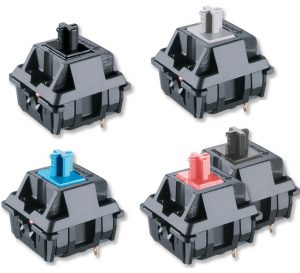The Role of a Membrane Switch in Modern Touch Interfaces and Controls
The Role of a Membrane Switch in Modern Touch Interfaces and Controls
Blog Article
Recognizing the Capability of Membrane Changes for Customer Interface Instruments
The functionality of membrane switches over represents a significant improvement in customer interface design, integrating efficiency with aesthetic adaptability. As markets progressively prioritize customer experience, comprehending the subtleties of membrane layer button modern technology ends up being important.
What Are Membrane Switches?
Membrane layer buttons are cutting-edge user interface devices that promote customer communication with electronic equipment. These flexible parts consist of multiple layers, consisting of a visuals overlay, spacer, and a printed circuit layer. The layout enables a smooth assimilation into different electronic devices, boosting both the visual and useful facets of interface.
Membrane buttons are generally employed in a variety of applications, from house devices to industrial equipment and medical gadgets. Their construction generally features a slim account, making them a suitable option for small layouts. The responsive feedback supplied by these switches can be engineered to meet specific user choices, ensuring efficient communication in between the user and the tool.
Longevity is an additional significant advantage of membrane layer switches, as they are immune to dust, dampness, and chemicals, which enhances their lifespan popular settings. Furthermore, these switches can be personalized in regards to shape, dimension, and visuals style, enabling for branding and user-specific attributes. On the whole, membrane switches represent a useful remedy for enhancing individual experience in digital gadgets, combining capability with visual charm in a reliable manner.
How Membrane Switches Over Work
Operating on a straightforward principle, membrane switches over utilize a split building to sign up user input successfully. Each button includes numerous layers, including a published circuit layer, a spacer layer, and a top visuals layer, which are made to function together flawlessly. When an individual presses the leading layer, it compresses the spacer layer, bringing the conductive elements of the circuit layer into call with each other.
This call produces a shut circuit, signaling the tool to execute a specific feature. The layout enables different arrangements, consisting of responsive feedback, which can enhance the user experience by offering a physical experience upon activation. The products used in membrane layer buttons frequently consist of versatile substratums, such as polyester or polycarbonate, which ensure toughness and resilience against wear and tear.

Key Benefits of Membrane Layer Buttons

One more significant benefit is their density. Membrane buttons are slim and lightweight, which enables makers to save area in their tools without compromising functionality. This feature is specifically useful in applications where weight and blog here volume are critical considerations.
In addition, membrane switches are resistant to dust, wetness, and chemicals, improving their sturdiness. This resilience expands their life expectancy and minimizes the need for frequent replacements, resulting in cost savings with time.
Furthermore, the responsive comments offered by membrane switches can be optimized to boost user communication. They can consist of attributes such as elevated buttons or distinct clicks, improving usability and customer experience.
Applications Throughout Industries
Interface gadgets making use of membrane layer switches prevail in a broad selection of sectors, showcasing their adaptability and performance. Membrane Switch. In the clinical sector, membrane layer buttons are indispensable to tools such as diagnostic devices and person monitoring systems, where their toughness and convenience of cleaning are vital for keeping health requirements. In the auto industry, these buttons are utilized in dashboard controls and infotainment systems, offering a smooth and contemporary user interface for individuals.
In addition, the customer electronic devices sector benefits from membrane layer switches in appliances and handheld devices, where small layout and easy to use interfaces enhance user experience. Industrial applications likewise take advantage of membrane changes for control panels in equipment and automation systems, stressing their robustness and resistance to severe atmospheres.
In the aerospace and protection markets, membrane switches are made use of in cockpit controls and equipment, where dependability and performance under severe conditions are paramount. Furthermore, the video gaming industry increasingly integrates membrane switches in controllers and game devices, adding to my link an engaging individual experience. In general, the adaptability of membrane layer changes enables their prevalent use across various fields, highlighting their importance in contemporary interface layout.
Future Patterns in Membrane Switch Technology

In addition, the use of sophisticated products, such as polycarbonate and polyester films, is anticipated to climb, providing enhanced longevity and resistance to environmental stressors. These products add to the total longevity of membrane layer buttons, making them suitable for harsher industrial applications.
Additionally, the incorporation of wise modern technology, including IoT connectivity, will certainly make it possible for membrane switches to interact with various other tools and systems, promoting an extra interactive customer experience. This fad straightens with the expanding need for clever tools throughout various fields, from healthcare to consumer electronics.
Lastly, modification alternatives are prepared for to increase, permitting producers to produce bespoke options customized to details individual requirements and choices. These advancements will place membrane buttons as essential elements in the advancement of interface technology.
Final Thought
In final thought, membrane layer switches over stand for a critical development in customer interface innovation, using a reputable and flexible option for diverse electronic applications. Their layered construction promotes compact design, while attributes such as responsive feedback enhance user communication. The longevity against environmental aspects additionally solidifies their utility throughout several sectors. As developments in product scientific research and touch picking up modern technologies continue, the capability and applicability of membrane buttons are expected to expand, strengthening their importance in contemporary electronic tools.
Report this page